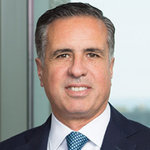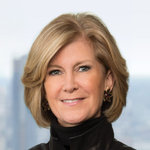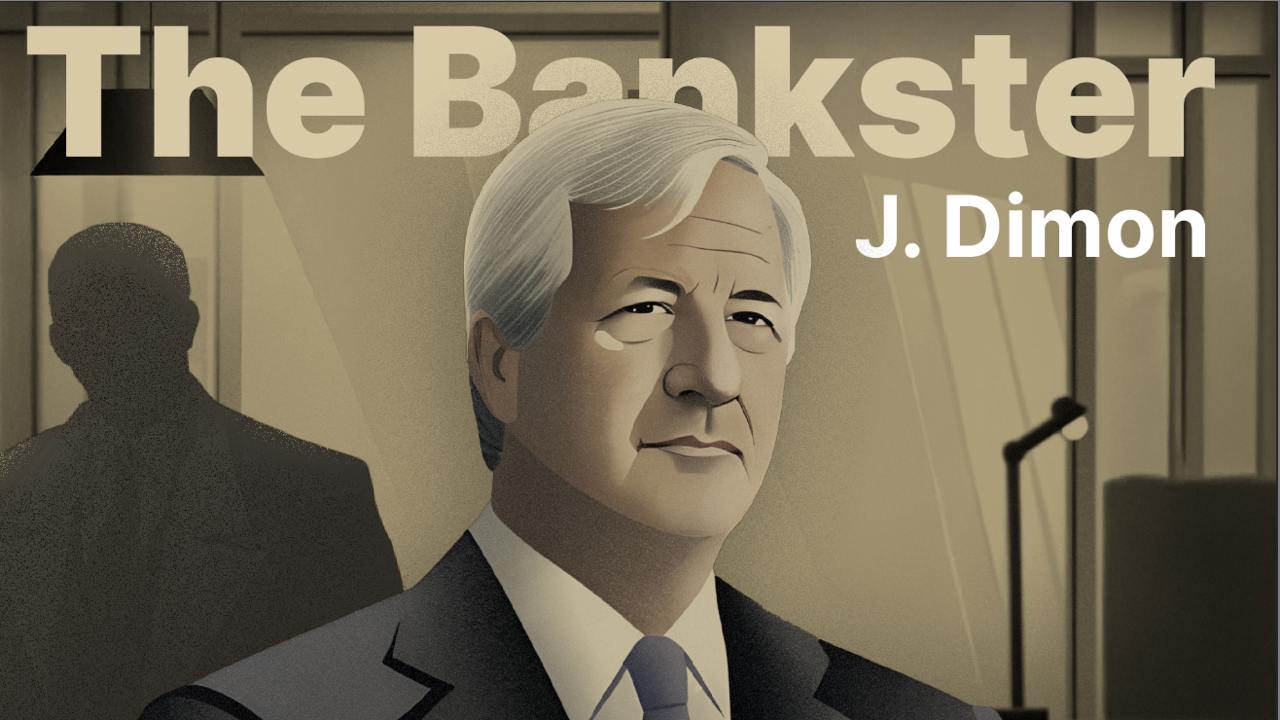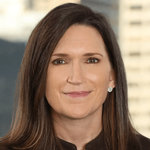
JPMorgan Chase & Co
NYSE:JPM

JPMorgan Chase & Co





In the bustling world of global finance, JPMorgan Chase & Co. stands as an emblem of dynamism and history, tracing its roots back to the 19th century. As one of the largest financial institutions in the world, it orchestrates a symphony of financial services under the leadership of its astute management team. The firm effortlessly combines its historical prowess with cutting-edge technology to serve millions of clients worldwide. Its main pillars of operations—consumer and community banking, corporate and investment banking, commercial banking, and asset and wealth management—operate in harmony to create a cohesive structure that underpins its formidable market presence.
At the core of JPMorgan's profitability lies its ability to seamlessly integrate these diverse segments. In consumer and community banking, it garners revenue through interest from loans and mortgages, while collecting fees from a myriad of banking services. Its corporate and investment banking arm is where high-stakes financial theatrics unfold, generating earnings through advisory fees, trading operations, and underwriting services. The commercial banking division caters to the intricacies of business needs, offering tailored lending and treasury services. Simultaneously, the asset and wealth management segment ensures the firm remains an indispensable guardian of clients’ financial futures, earning fees from its suite of investment products and advisory services. In this multifaceted dance of finance, JPMorgan Chase expertly navigates markets, balancing risk and reward to maintain its stature in the world of modern banking.
Earnings Calls
Management


James Dimon, widely recognized as Jamie Dimon, is an influential American business executive serving as the Chairman and Chief Executive Officer of JPMorgan Chase & Co., one of the largest and most prestigious banking institutions in the world. Born on March 13, 1956, in New York City, Dimon has become one of the prominent figures in the financial industry. Dimon comes from a family with a rich banking tradition; his grandfather was a Greek immigrant and a stockbroker at Shearson, and his father worked as an executive vice president at American Express. Jamie Dimon attended Tufts University, earning a degree in psychology and economics, and later graduated from Harvard Business School with a Master of Business Administration. Starting his career as an assistant to Sandy Weill at American Express, Dimon established a close professional relationship with Weill that lasted for many years. He played a significant role in the mergers that formed Citigroup. In 2000, Dimon took over as CEO of Bank One Corporation, and when JPMorgan Chase purchased Bank One in 2004, he became President and Chief Operating Officer of the combined company. In 2005, Dimon was appointed CEO, and in 2006 he became the Chairman of the Board of JPMorgan Chase. Under his leadership, the bank navigated the 2008 financial crisis with far less damage than many of its competitors and subsequently emerged as a stronger entity. Dimon's strategic acumen, financial expertise, and leadership qualities have been credited with the bank's resilience and growth. Despite his successes, Dimon has faced various challenges, including regulatory scrutiny and legal issues. He is also known for his outspoken views on economic policy and regulatory frameworks. Nonetheless, his leadership continues to be widely respected in the financial sector, making him a prominent figure in global banking.

Daniel Eduardo Pinto serves as the Co-President and Chief Operating Officer of JPMorgan Chase & Co. and is the CEO of the Corporate & Investment Bank (CIB) division. Born in Argentina, he embarked on a noteworthy career journey, joining J.P. Morgan in 1983 and climbing through the ranks due to his impressive expertise in financial markets. Pinto has played a critical role in overseeing and steering the investment banking operations at JPMorgan, globally recognized for its leadership in investment banking, financial and derivatives trading, and securities services. His strategic vision has been pivotal in JPMorgan's continued growth and development, adapting to changes in the financial landscape while maintaining a strong competitive edge. He is known for his deep understanding of the financial markets and his ability to navigate complex global economic environments. Pinto's leadership is characterized by a pragmatic approach to risk management and innovation within the banking sector. Being an influential figure in global banking, his decisions and insights are closely watched by industry peers and analysts alike.

Jeremy Barnum is an executive at JPMorgan Chase & Co., where he holds the position of Chief Financial Officer (CFO). In this role, he is responsible for overseeing the financial operations of the company, which includes managing the firm's financial strategy, accounting, tax, and investor relations. As CFO, Barnum plays a critical role in steering the financial direction of JPMorgan Chase, ensuring its financial health and compliance with regulatory requirements. Before becoming CFO, Jeremy Barnum served in various roles within the company, which he joined in the early 2000s. His experience encompasses a wide range of functions, such as risk management, trading, and treasury and chief investment office operations. Prior to his current role, he held the position of Head of Global Research for JPMorgan's Corporate & Investment Bank, providing him with extensive experience in the financial industry. Barnum holds a strong academic background and has contributed to JPMorgan Chase's strategic initiatives and financial planning processes, supporting the firm's growth and adaptation in the ever-evolving banking landscape. His leadership and expertise have been instrumental in maintaining JPMorgan's position as one of the top financial institutions in the world.

Mary Callahan Erdoes is a prominent figure in the financial industry, serving as the Chief Executive Officer of J.P. Morgan Asset & Wealth Management, a division of JPMorgan Chase & Co. Mary has been with the company for a significant part of her career, joining in 1996, and has risen through the ranks due to her exceptional leadership and expertise in asset and wealth management. Born in 1967 in Chicago, Illinois, she graduated from Harvard Business School with a Master of Business Administration degree and earned a bachelor's degree in mathematics from Georgetown University. Her educational background laid a strong foundation for her career in finance. Under Mary Callahan Erdoes's leadership, J.P. Morgan Asset & Wealth Management has consistently been recognized as one of the largest and most respected investment and wealth management entities worldwide. She has played a crucial role in expanding the firm's global presence and enhancing its service offerings to meet the diverse needs of its clients. Known for her strategic vision and commitment to innovation, Erdoes sits on several influential boards and committees within the industry. Her contributions have not only been instrumental in the firm's success but also in advancing the role of women in finance, as she is a staunch advocate for diversity and inclusion. Mary is well-respected within both her company and the broader financial community for her insightful perspectives on market trends and investment strategies, making her one of the most influential women in finance today.

Marianne Lake is a prominent finance executive known for her significant contributions at JPMorgan Chase & Co. She served as the Chief Financial Officer (CFO) of JPMorgan Chase from 2013 to 2019, making her one of the most powerful women in the banking sector. During her tenure as CFO, Lake was responsible for overseeing the financial operations of the company, providing strategic financial insights, and communicating with investors and analysts. Born in the United Kingdom, Lake holds a degree in physics from the University of Reading. She began her career at PricewaterhouseCoopers, where she gained extensive experience in the banking and capital markets sector. Her journey with JPMorgan Chase started in 1999, and since then, she has held various senior positions within the company, including roles in investor relations and finance. In 2019, Marianne Lake transitioned to the role of CEO of Consumer Lending at JPMorgan Chase, which includes oversight of the home lending, auto finance, and card services businesses. Her leadership in these areas focused on enhancing customer experiences and leveraging technology to drive growth and efficiency. Lake is highly regarded for her analytical acumen, operational expertise, and leadership skills. She has often been mentioned as a potential future CEO of JPMorgan Chase, reflecting her stature within the organization. Her career serves as an inspiration for many in the financial industry, particularly for women aiming to reach high-level executive positions.

Jennifer A. Piepszak is a prominent executive at JPMorgan Chase & Co., one of the largest and most influential financial institutions in the world. She has held various significant roles within the company, showcasing her expertise and leadership in the financial sector. Jennifer Piepszak began her career at JPMorgan Chase over two decades ago and quickly rose through the ranks due to her strong analytical skills and strategic mindset. She has served in several senior positions across different divisions of the bank, gaining comprehensive experience in financial operations and management. One of her most notable roles was serving as the Chief Financial Officer (CFO) of JPMorgan Chase, a position she took on in 2019. As CFO, Piepszak was responsible for overseeing the firm's financial activities, including budgeting, forecasting, financial planning, and analysis. She played a crucial role in guiding the company's financial strategy and ensuring its fiscal health. Before becoming CFO, she was the CEO of the company's Card Services division, where she managed one of the largest credit card portfolios in the world. Her leadership helped in expanding the business and strengthening its position in the marketplace. Her exceptional leadership and deep understanding of the financial industry have earned her a reputation as a respected and influential figure within the banking sector. Piepszak's contributions to JPMorgan Chase have been instrumental in shaping its strategic direction and maintaining its position as a leader in the global financial industry.


As of the latest available information, Sripada Shivananda serves as a prominent executive at JPMorgan Chase & Co. Known for his leadership in the technology and financial sectors, Shivananda holds a significant position, with responsibilities likely focused on technological advancements, strategic technological initiatives, and innovation within the bank. Prior to his role at JPMorgan Chase & Co., he had a distinguished tenure at PayPal, where he contributed extensively to the company's technology strategies and development. During his career, Shivananda has been recognized for his ability to integrate technology with financial services, enhancing both operational efficiencies and customer experiences. His expertise spans areas such as product development, IT strategy, and digital transformation. Through his leadership, Shivananda continues to influence the direction of technological growth and adaptation at JPMorgan Chase & Co., contributing to its position as a leader in the financial industry. Note: Please verify this information from current resources as roles and responsibilities may have changed.

Lori Ann Beer is a seasoned technology executive known for her leadership at JPMorgan Chase & Co., where she serves as the Global Chief Information Officer (CIO). In this role, she is responsible for the firm's technology systems and infrastructure, managing over 50,000 technologists and a significant technology budget. Lori Beer focuses on driving innovation and digital transformation across the organization, ensuring the bank's technology infrastructure supports its business needs and customer demands. She joined JPMorgan Chase in 2014 and initially served as the Chief Information Officer for the Corporate & Investment Bank. Before her tenure at JPMorgan Chase, Beer held leadership positions at various companies, including WellPoint, Inc. (now Anthem, Inc.), where she served as the Executive Vice President of Specialty Businesses and Information Technology. Lori Beer is recognized for her efforts in advancing the firm's technological capabilities, embracing emerging technologies, and fostering a culture of innovation. She holds a Bachelor’s degree in Computer Science from the University of Dayton and is actively involved in initiatives to support women in technology.

















































 You don't have any saved screeners yet
You don't have any saved screeners yet
